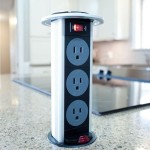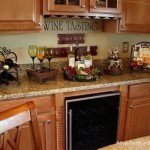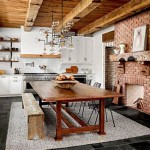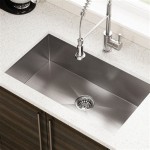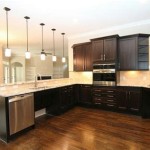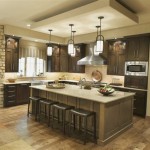Best Hood Vents for Kitchen
A proper kitchen ventilation system is crucial for maintaining a clean and healthy cooking environment. Effective hood vents remove smoke, grease, steam, and cooking odors, protecting cabinets and improving indoor air quality. Choosing the right hood vent involves considering various factors, including kitchen size, cooking style, and aesthetic preferences.
Key Points to Consider When Choosing a Hood Vent
Selecting the appropriate hood vent requires careful consideration of several key aspects to ensure optimal performance and integration with the kitchen environment.
*Type:
Various hood vent types exist, including under-cabinet, wall-mounted (chimney), island, and downdraft. Each type caters to specific kitchen layouts and design preferences. *CFM:
Cubic feet per minute (CFM) measures the airflow rate. Higher CFM ratings indicate more powerful extraction, essential for high-heat cooking methods. *Size:
The hood vent should adequately cover the cooking surface. Ideally, the hood should be the same width or slightly wider than the range or cooktop. *Ducting:
Proper ducting is crucial for efficient ventilation. Short, straight duct runs maximize airflow and minimize noise. *Noise Level:
Consider the sone rating, which measures perceived loudness. Lower sone ratings indicate quieter operation. *Features:
Additional features like lighting, variable speed settings, and automatic shut-off enhance convenience and functionality. *Aesthetics:
Hood vents are available in various styles and finishes to complement different kitchen designs.Types of Hood Vents
Understanding the different types of hood vents available is essential for making an informed decision.
*Under-Cabinet Hoods:
These compact and affordable hoods mount under kitchen cabinets, making them ideal for smaller kitchens. *Wall-Mounted (Chimney) Hoods:
These visually striking hoods mount against the wall and vent through a chimney, offering powerful ventilation. *Island Hoods:
Designed for kitchens with island cooktops, these hoods suspend from the ceiling and provide 360-degree ventilation coverage. *Downdraft Hoods:
Integrated into the cooktop, downdraft vents pull smoke and odors downwards, disappearing into the countertop.Understanding CFM Ratings
CFM ratings directly correlate with a hood vent’s ability to effectively remove airborne particles and maintain a clean cooking environment.
*Matching CFM to BTU:
As a general rule, the hood vent should have a CFM rating of at least 100 CFM per 10,000 BTU of cooktop output. *Considering Cooking Style:
High-heat cooking, such as stir-frying or grilling, requires higher CFM ratings.Importance of Proper Ducting
Proper ducting plays a vital role in optimizing hood vent performance and minimizing noise levels.
*Short and Straight:
Keep duct runs as short and straight as possible to minimize air resistance and noise. *Proper Size:
Ensure the duct size matches the hood vent’s outlet. *Material:
Use rigid metal ducting, such as aluminum or galvanized steel, for optimal airflow. Avoid flexible ducting, which can restrict airflow and trap grease.Noise Level Considerations
Excessive noise from a hood vent can disrupt the kitchen environment. Choosing a quieter model enhances the overall cooking experience.
*Sone Ratings:
Look for hood vents with lower sone ratings, typically below 6 sones, for quieter operation. *Ducting Impact:
Proper ducting also contributes to minimizing noise levels.Additional Features and Aesthetics
Modern hood vents often include features that enhance functionality and convenience.
*Lighting:
Built-in lighting illuminates the cooking surface, improving visibility. *Variable Speed Settings:
Adjust the fan speed to match cooking needs. *Automatic Shut-Off:
Timers allow the hood vent to automatically shut off after a specified period. *Style and Finish:
Choose a hood vent that complements the overall kitchen design, with options ranging from stainless steel to custom wood finishes.Maintenance and Cleaning
Regular maintenance ensures optimal hood vent performance and longevity.
*Filter Cleaning:
Clean or replace filters regularly, depending on usage. Grease buildup can reduce airflow and pose a fire hazard. *Duct Cleaning:
Professional duct cleaning is recommended periodically to remove accumulated grease and debris. *Exterior Cleaning:
Wipe down the exterior surfaces of the hood vent regularly to maintain its appearance.Choosing the Right Hood Vent for Your Kitchen
Selecting the best hood vent requires careful consideration of the factors discussed above. Assessing your kitchen size, cooking style, budget, and aesthetic preferences will guide you toward the ideal choice. Researching different models, reading reviews, and consulting with appliance professionals can further assist in making an informed decision.

Best Range Hoods For Your Kitchen The Home

Best Range Hoods For Your Kitchen The Home
:strip_icc()/102182173-aa40bee4dcac4216b9dfcf31aa250565.jpg?strip=all)
25 Range Hood Ideas And Styles From Modern Farmhouse To Eclectic

The Best Range Hoods For Your Home Coppersmith

Best Range Hoods For Your Kitchen The Home

Best Range Hoods For Your Kitchen The Home

Choosing A Range Hood Height
:strip_icc()/102024404-1294d939ecc64d3a8507bfaac84477aa.jpg?strip=all)
25 Range Hood Ideas And Styles From Modern Farmhouse To Eclectic

15 Gorgeous Kitchen Range Hoods That Are Eye Candy Not Eyesores The Most Beautiful We Ve Ever Seen

Shopping For Kitchen Range Hoods The New York Times

